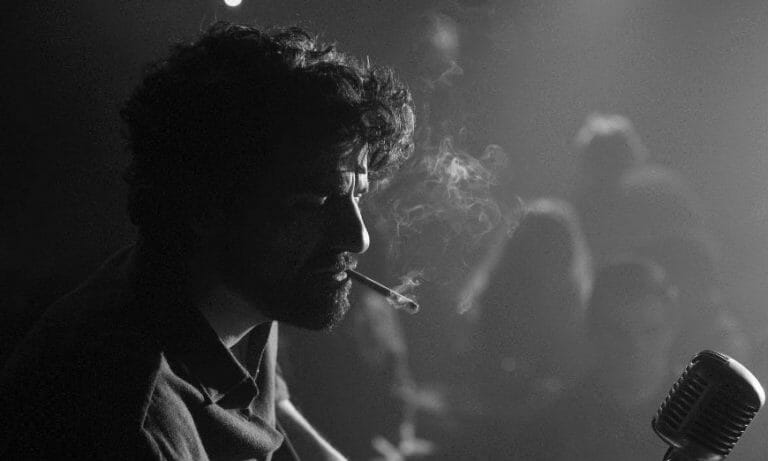By Eric Owusu · June 13, 2015

Musicians are entertaining to watch, on and off stage. Year after year, many musicians pack out concert halls, arenas, and festivals with screaming, adoring fans. Famous musicians also keep fans entertained when they’re not on stage with personal ongoings that litter news sites.
Movies about musicians can be just as entertaining and thought provoking. They can take us into the inner workings of the music industry, band politics and the personal demons many musicians battle. Even though most movies with musicians as the lead figure are fictional, many of them tell real stories about embattled musicians.
When writing your screenplay that shows audiences how a troubled musician deals with their troubles, keep these tips in mind to create a compelling one.
Introduce Us To The Musician Immediately
There are several quality examples of movies about troubled musicians. Read the screenplays for Ray, Get On Up!, Amadeus, and Inside Llewyn Davis. I’ll use the heavily lauded Inside Llewyn Davis as my main example. We first meet folk musician Llewyn Davis at a music venue in New York City’s Greenwich Village in the 1960s. He gets beat up and performs hauntingly well for an audience there. That’s his life. Rough, but driven by his love of performing and producing music his way.
We see instances of Davis as he juxtaposes himself and other folk musicians who are more apt at playing the game of selling themselves to audiences for more success. Lots of musicians in screenplays, especially lead ones, want to make their music their own way, which usually doesn’t involve pandering or conforming. Even if you’re writing a screenplay about a musician who does follow the rules, be sure to paint that picture of them interestingly and immediately.
Show Us How They Cope With Conflict
Since many musicians want to play by their own rules, they face a lot of opposition from several sources; even their own bodies. Their desires pit them against shady record label executives, ineffective managers, unhealthy sexual decision-making, and addictive substances. You know, sex, drugs and rock-n-roll. Conflict always makes for more interesting story telling, and Inside Llewyn Davis isn’t short on that.
One of his main conflicts, however, is keeping track of his friend’s elusive cat. Davis leaves a conversation with Jean, who may or may not be carrying his unborn child, to chase the cat he let escape. Not only do we see how Davis deals with conflict, but we also see what he gives precedence and what he doesn’t. We see how this troubled musician prioritizes his problems. The cat belongs to friends that let him sleep on their couch. Jean isn’t that valuable to him at that moment, as we see him abandon their meeting to chase his key to food and shelter, which allow him to survive and to be able to perform.
Show your musician deal with different conflicts in order to show us what’s important to them and how they try to put out the biggest fires in front of them, and why.
Have Them Make Music With Us Watching
The music is a very important part of a movie about a musician. For some people, it’s why they read screenplays and watch movies about musicians. Inside Llewyn Davis shows Davis actually sing and play guitar for audiences, in instances where he wants to perform and doesn’t want to perform. The musicianship we see shows how passionate he is about his art and where he is willing to perform to keep being able to create.
Showing the musician play music also reiterates how good they are at their art and shows them in their most optimal state. While watching and reading Inside Llewyn Davis, he stares at the guitar he’s strumming as if he’s having an intimate moment with it, that the audience just happens to be there observing. Moments like these are what musicians live for, so get that across in your screenplay about them.
Let Them Succeed Occasionally
Stories about troubled musicians who play by their own rules seldom have happy endings. Middles. Hell, even beginnings. Inside Llewyn Davis starts and ends with a man beating Davis up in the street. The runtime between those assaults shows him chasing a cat, finding out bad news about his children, dealing with the police, a drug overdose, and making his friend cry.
Yeesh.
But the moments where your musician triumphs are so much sweeter when they’re surrounded by so much unpleasantness. Heroes need something to strive for, and audiences appreciate when they get them. Throw your musician a bone every once in a while. Screenplays that are all gloom are boring; too one-note. Make its story a melodic composition with highs, lows, and in-betweens. Switch the style up. Audiences will come for the music and stay for the story.